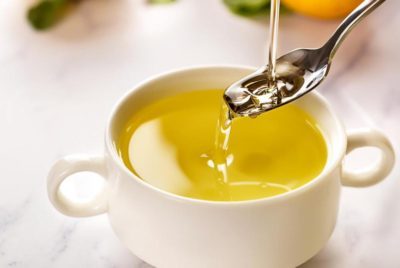By providing your e-mail address, you are consenting to receive press releases, quarterly and annual reports, presentations and other information concerning Titan Mining Corporation and its affiliates and partners.

Oleic acid is a fatty acid, found naturally in various animal and vegetable fats and oils – such as canola. It is both colourless and odourless, though commercial samples appear in a yellowish colour. Chemically, oleic acid is a monounsaturated omega-9 fatty acid. This valuable fatty acid is recognised as beneficial to cardiovascular and cerebrovascular health.
The World Health Organisation conducted a census in the Mediterranean and found that very few people in these parts suffered from cardiovascular disease. After conducting further research, it was concluded that these health attributes were linked to the amount of olive oil the people consumed on a daily basis.
Since this discovery, the use of olive oil has spread throughout the world and is now recognised as one of the healthiest vegetable oils. Why? Because olive oil is rich in oleic acid, containing up to 75% of this healthy fatty acid. Canola oil is just as rich in oleic acid as olive oil, but compared to other ingredients, high-oleic canola oil is the ideal choice as it contains the lowest amount of saturated fatty acids that are harmful to the body.

Rich in oleic acid
- Oleic Acid: 80-85%
- Erucic Acid: 0%
- Saturated Fatty Acid: 5%
- Polyunsaturated Fatty Acid: 10%
Health Benefits
- Preventing cancer
- Inhibiting allergies
- Preventing inflammatory diseases
- Enhancing memory
- Improving sleep
The first time high-oleic seed was successfully studied by the American grain and oil giant who successfully developed canola containing up to 73% oleic acid. Chinese agricultural scientists have since adopted traditional cultivation techniques and continued conducting decades of continuous improvements and reform on their methods. This resulted in them achieving a breakthrough in the quality of high oleic rapeseed, increasing the oleic acid content to 85%.
This revolutionary technological breakthrough successfully reduces, and can even eliminate, harmful substances, including erucic acid and saturated fatty acids in the canola oil. Not only does it reduce or eliminate the harmful substances, but it also increases the beneficial monounsaturated fatty acids and other substances.


Zhongke Oil is currently growing the latest high-oleic canola variety. The monounsaturated fatty acid is naturally pressed and contains up to 85% of this healthy fatty acid, while the polyunsaturated fatty acid levels are reduced to less than 10% and saturated fatty acids to less than 5%. This exceeds that contained in olive oil as they contain just 75% monounsaturated fatty acids, 10% polyunsaturated fatty acids, and 15% saturated fatty acids.
Not only does high-oleic canola oil provide healthy nutritional structures, but it also has a high smoking point of above 230 degrees.
